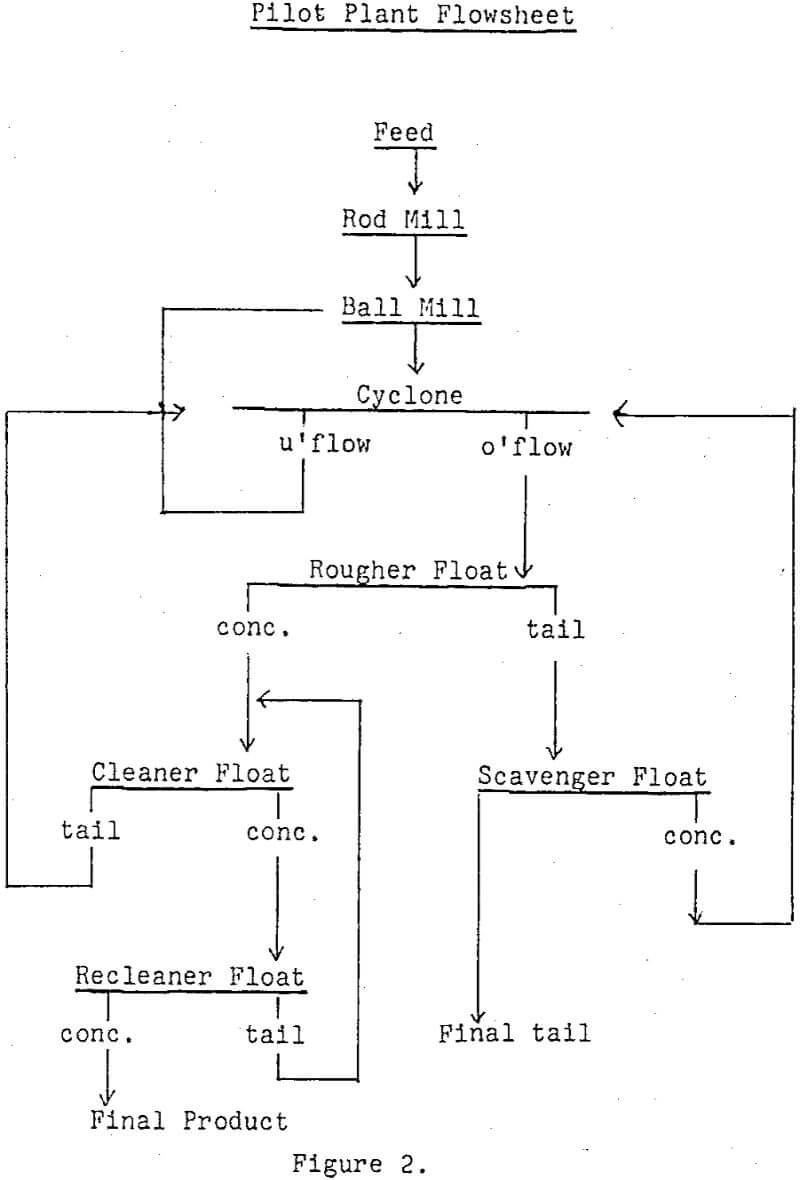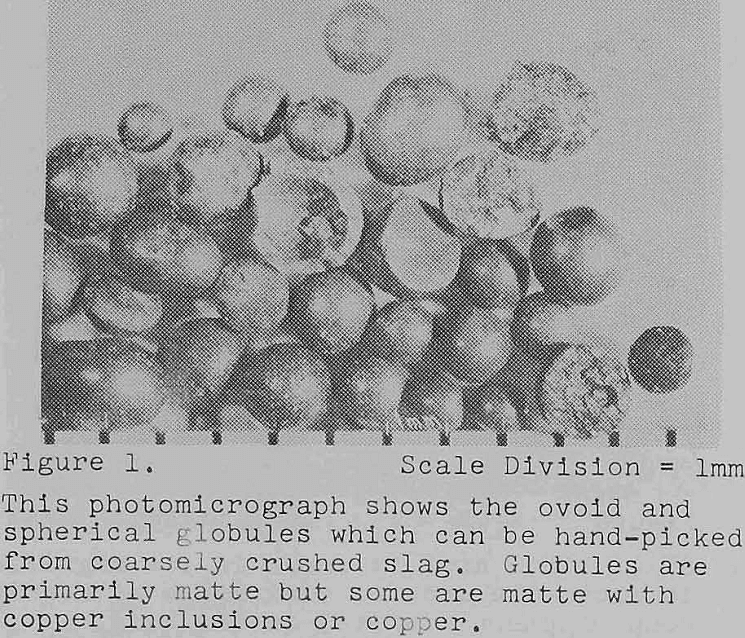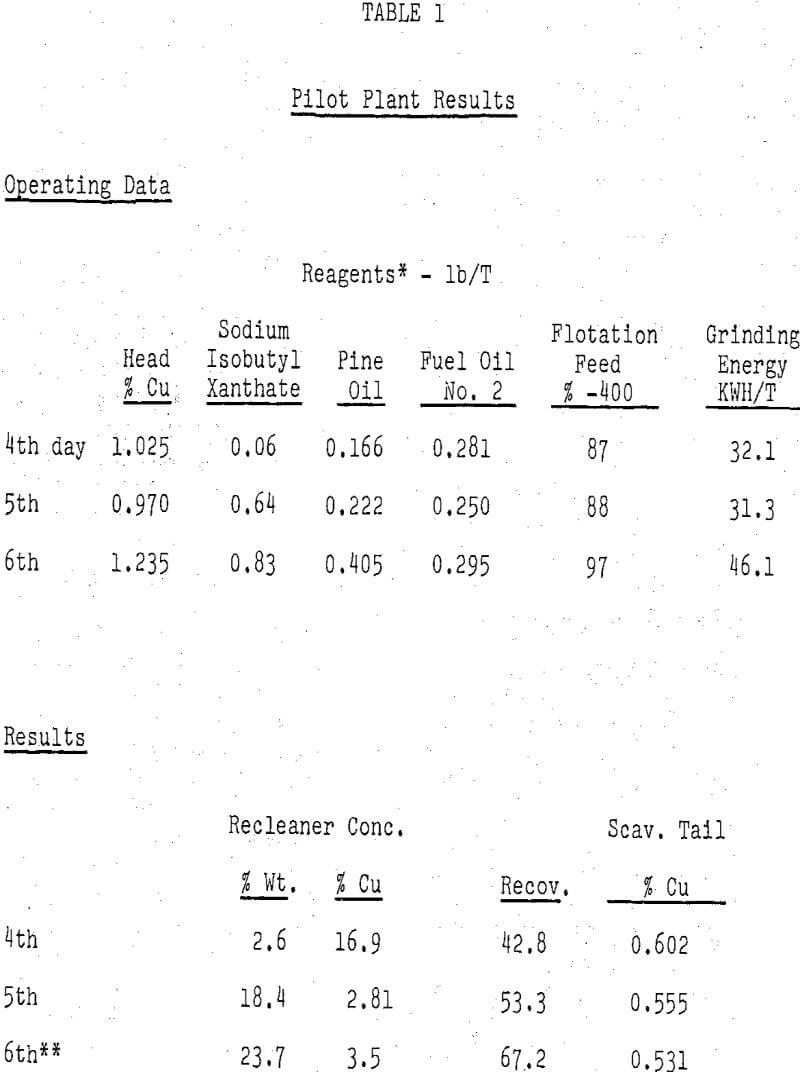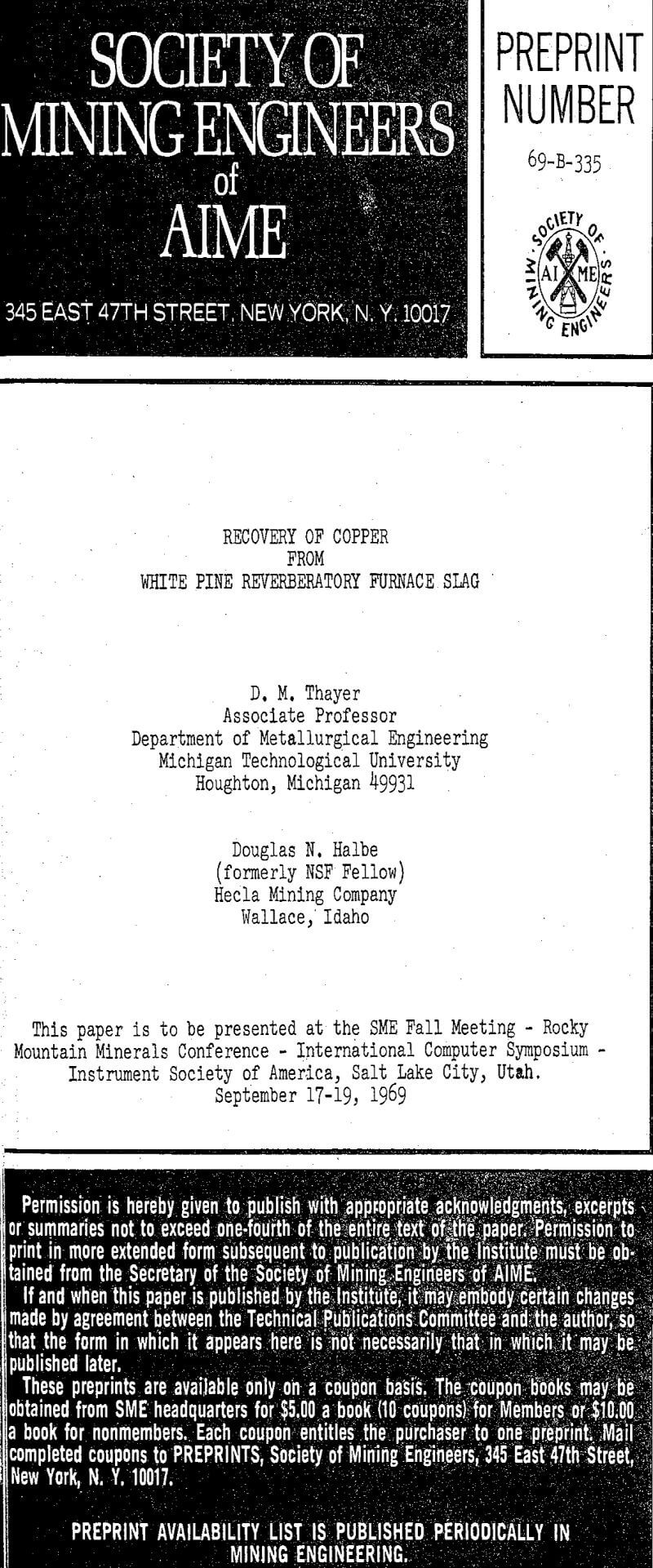Laboratory and pilot plant investigations have indicated that copper recoveries of 50% can be achieved with fine grinding and flotation of a copper reverberatory furnace slag. Microscopic and microprobe studies indicate that the recoverable copper is in the form of matte, chalcocite, and metallic copper; the percentage of copper in particles appearing to be copper-free was from 0.23 – 0.54%.
eratory slag from the White Pine slag dump and most probably represents a wide variation in slag composition.
A significant amount of matte and some metallic copper was observed in the preliminary evaluation. Inasmuch as these particles appeared in the +48 mesh range, gravity concentration was considered. The feed material was stage ground to 35 mesh and treated by tabling. This operation produced a concentrate which assayed 10.6% Cu and contained 13.0% of the copper present in the feed material. Subsequent microscopic observations indicated that the majority of the recoverable copper values occur as finely disseminated particles, and fine grinding followed by flotation appeared to be the most reasonable approach for significant copper recovery.
esults on the fourth day, using 0.06/ton of collector (sodium isobutyl xanthate) and a grind of 87% minus 400 mesh, show a good grade (16.9% Cu) but less than 50% recovery (42.8%). On the following day the collector concentration was greatly increased to determine if it were possible to produce acceptable recovery. The cells were pulled very hard resulting in a 53% recovery but a severe decrease in grade to 2.8% Cu.
Since results of the fourth and fifth days’ runs indicated that both the initial grade and recovery specifications could not be achieved at the 87% minus 400 mesh grind, a finer grind (97% minus 400 mesh) was tried on the sixth day. Recovery at the finer grind was 67.0% with a grade of 3.5% Cu. Two more recleaning steps were performed on a sample of this concentrate and a product of 8.5% Cu with an overall recovery of 51% was achieved. It is felt that further experimentation at this grind would result in meeting the original specifications.
The presence of copper in reverberatory furnace slag is accepted as being due to two factors: chemically dissolved copper and mechanically entrapped matte. Beyond this fact, however, opinions on the nature of the materials involved begin to diverge.
A sample of flotation recleaner concentrate from the pilot plant assaying 16.9% Cu was used for microprobe analysis of the copper-bearing phases. An initial qualitative scan of the recleaner concentrate was made over an area 224 microns on a side.
This pilot plant work, while demonstrating the technical feasibility of recovering copper from White Pine slag, indicates that milling costs would be substantially higher than those of more common copper milling operations.
Results of the microprobe analysis definitely indicate the presence of significant amounts of dissolved or less-than-0.5-micron particles of copper in the slag. This, in conjunction with the microscopically observed blebs of minus five micron copper and matte, set a definite upper limit on the amount of copper recoverable from this slag by conventional beneficiation methods.




